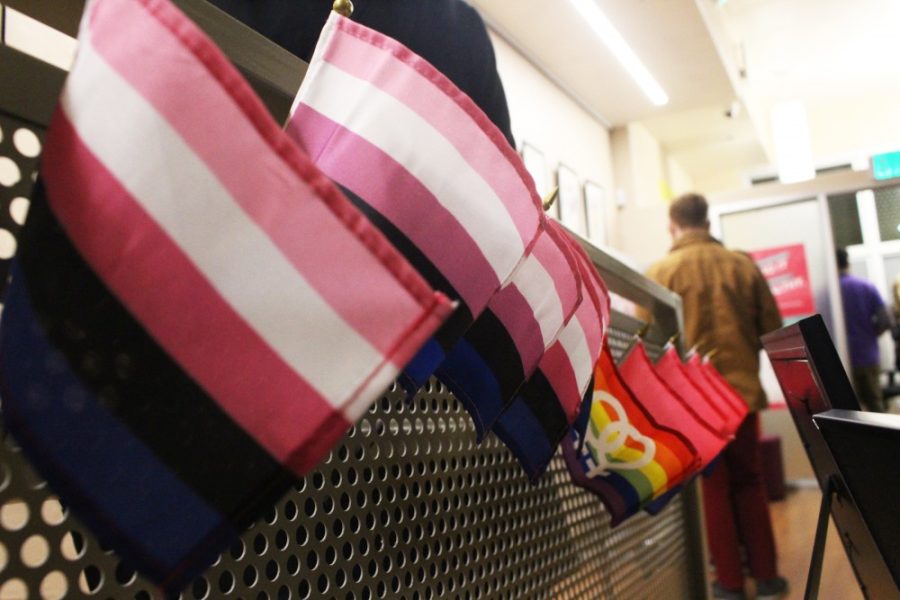In 1993, a small group of graduate students and assistant professors started what would become the University of Arizona’s Institute for LGBT Studies. Almost 30 years later, the institute continues to work to provide resources, events and programs to LGBTQ+ students, faculty and staff at the UA.
When UA Film and Television professor Beverly Seckinger reflected on starting the Institute for LGBT Studies, which was, at the time, the Committee on LGB Studies, she described demanding the Office of the Provost establish the organization.
“We stormed the Provost Office and demanded to be made a thing,” Seckinger said. “[We told them], ‘We need a queer thing at the UA! Because it’s happening at NYU and happening at SUNY, it’s happening in other places. So we need our thing, too.”
RELATED: Groundworks creates safe haven for local youth artists
Over the next 20 years, the “thing” would grow into the Committee on LGB Studies and then the Institute for LGBT Studies. But when it started, the Committee on LGBT Studies was the “smallest thing” it could be, according to Seckinger.
“We got a committee, which is the smallest thing that existed, that was a formalized thing. An invisible thing,” Seckinger said. “Invisible to the homophobic legislature of the time. So not a budget line in the university’s budget, it was a smaller thing than that.”
The Committee for LGB Studies was granted a “teensy” budget and one course release for the committee head, so they could have time off of class to do the work of the committee.
A small start and few resources were enough, however, for the committee to launch a few successful projects, the first of which was a sapphic film series called “Lesbian Looks,” which was hosted on Tuesday nights in the Modern Languages building. The committee also was able to add an interdisciplinary gen-ed LGBT studies course that, according to Seckinger, “is still on the books.”
In the years following, the committee received funding to hire a director full time, bring scholars in residence and host seminars and presentations, including a conference called Sex and Scholarship.
“It’s a long history with a lot of amazing accomplishments,” Seckinger said. “Considering the beginnings of this little gang of powerless grad students and assistant professors who went into the Provost Office saying, ‘We want resources.’”
The committee became the institute in 2007 and is now comprised of a staff of professors, graduate and undergraduate students. The Institute for LGBT Studies hosts weekly events, research projects and initiatives, including the Trans Studies Research Cluster.
The Trans Studies Research Cluster is a group of professors at the UA working together to “support, encourage, and promote trans studies,” as stated on the institute’s website.
“Part of [our work] is about generating knowledge and thinking about creating a particular hub for trans knowledge at the UA and to do that in a transdisciplinary way,” said Z Nicolazzo, who teaches in the College of Education.
The Trans Studies Research Cluster has developed many impactful projects over their short time, including a weekly symposium, a reading group focused on trans and queer literature, and the hosting of postdocs at the UA, who are able to research and share their work and knowledge.
Although the institute has been able to do a lot of great, impactful work over the years, it’s facing a similar issue now as it did 20 years ago: limited funding.
RELATED: Best friends in business: Two UA alumni launch their own businesses
“The institute is highly underfunded, which means that there’s a lack of ability for the institute to do what they could be doing,” Nicolazzo said.
Improved funding isn’t the only thing that the UA can do to support the LGBT faculty and staff who are doing this work. Nicolazzo stated that the UA should start providing transgender healthcare, hiring more trans and queer teachers and creating the infrastructure to develop more queer coursework.
“If the university really cares about creating queer and trans coursework, then they need to invest financially in queer and trans people and queer and trans knowledge,” Nicolazzo said. “They need to create a climate that’s conducive for queer and trans people, not just to be recruited but to be retained here.”
There is still a lot of work to do in order for the UA to become the best institution that it can be for lesbian, gay, bisexual, transgender and queer faculty, staff and students. However, according to Seckinger, there is evidence that positive change can happen, and happen quickly.
“[Seeing] this change in my lifetime … tells me that you can see social change happening in the space of, not even a lifetime,” Seckinger said. “Then that tells you, ‘Oh, wow, it really does matter what I do. I could join forces with people who want to make change.’ And actually, it will make change.”
Follow the Daily Wildcat on Twitter















